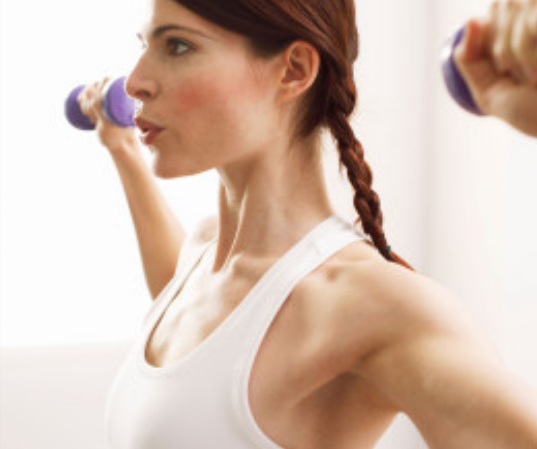Muscles need oxygen to work and the most important way your body gets oxygen is through the air you breathe. Exercise increases the amount of oxygen in your blood, but if you’re not breathing right, you may be getting short-changed. How you breathe can affect the quality of your workout, your energy level during and after exercise, and your ability to burn fat.
Here we examine how breathing right can help you when you exercise and steps to take to improve your breathing.
Posture and Breathing
The muscles used for good posture are the same muscles used for proper respiration. Between the abdominal muscles, spine, and back muscles are the lungs, diaphragm and pelvic floor that support good breathing patterns. This is why posture is so important to proper breathing technique. You may have heard of chest breathing vs. belly breathing or diaphragmatic breathing. Your ability to breathe at an optimal level has a lot to do with lung capacity which is affected by the position of your diaphragm in relation to your rib cage and abdominal muscles. If you breathe from your chest, your breaths are shorter and more shallow which doesn’t use your entire lung capacity and could leave you feeling tired quicker than if you practiced belly breathing. Proper posture sets you up for breathing at an optimal level i.e. diaphragmatic breathing. Without good posture, you can’t maintain proper breathing patterns.
Cardio Machines and Posture
Even if you have good posture, it may be hard to maintain during certain exercises. Strangely enough, cardio machines like the elliptical, treadmill, bicycle, and stair climber are the hardest to maintain proper posture if you’re not consciously focusing on it. From speed, to incline, to seat height (when cycling), to changes in resistance, many people use poor posture such as hunching over, overstriding, looking down, or otherwise not staying upright on these machines. To be sure you’re getting the most out of your cardio workout, be sure not to sacrifice posture for anything else. A great exercise to practice good posture and alignment with proper breathing patterns is the 90/90 bridgewith Ball and Balloon.
Mouth vs. Nasal Breathing
Many people breathe much faster than they should during exercise, or worse, they hold their breath frequently. It makes sense that less air enters your lungs with faster, more shallow breathing. Generally, people who breathe through their mouth have a harder time breathing deeply. Breathing through your nose however will allow you to breathe in more air, using more of your lung capacity, and thus take in more energy. Because it is a deeper breath, nasal breathing promotes belly breathing as opposed to chest breathing. As you master inhaling through your nose, incorporate slower deeper breaths. Studies show nasal breathers have better posture, too. To get the most energizing breaths into your body, breathe in and out through your nose. When you are cooling down or trying to slow your breath after a workout during stretching for example, breathing through your nose and out through your mouth is helpful.
The 3:2 Ratio
The last step to improving your breathing is balancing your inhale and exhale. Many experts employ a ratio to help you consciously control your breath. The 3:2 inhale-to-exhale ratio calls for inhaling for three steps and exhaling for two. So when you’re walking, cycling, or climbing stairs, try this technique to keep your breaths slow and under control. You may find it hard to do at first, as the slower breaths may slow your pace, but as you practice, you’ll get a rhythm and maintaining the 3:2 ratio will come as second nature.
Source: Calorie Count


